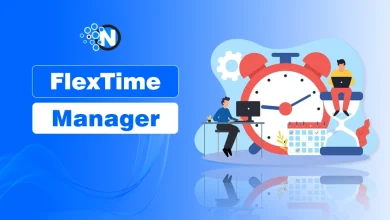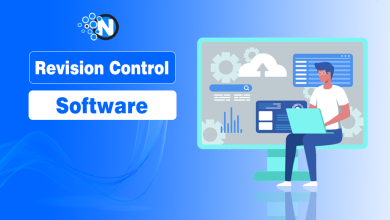The ROI of DRM: How Content Protection Supports Long-Term Monetization

Have you ever thought about how your favorite shows and movies always remain safe against piracy activities? The content industry has lost billions of dollars on a yearly basis, and is harmful to creators and streaming services due to piracy.
Digital Rights Management is responsible for making sure that only subscribers have access to content. Through defending intellectual property, IT ensures revenues and drives the creation of new content.
A DRM solution strengthens the flowing business and protects digital content to maximize earnings in the long run.
If you are unaware of its impact on content, then this blog is for you. In this blog post, I will discuss DRM ROI and how it protects and supports long-term monetization.
What is DRM?
Digital Rights Management, or DRM, is a set of tools used by content owners to manage who can access their content, such as songs, etc. In this case, it sets up a way to manage how people use content once they have it.
Digital rights management systems work by limiting what authorized users can do with digital assets. Some of these restrictions could be that you can’t print or share the information.
In most cases, the content is encrypted with the help of DRM. This procedure ensures that only those with the correct decryption key can access or read the information.
DRM is supposed to protect digital content and ensure that people do not access and share it without the approval of the owners. The system has assisted content producers so that they get rewarded for the content they produce. It also assists in the promotion of their creation.

How Content Protection Supports Long-Term Monetization?
The DRM system serves as a necessary tool to protect your content and copyright in the digital era. In the current digital landscape, protecting the content from being copied and shared is a challenge to creators and rights holders.
Here are the ways that how does DRM performs content protection. And how it supports the long-term monetization.
Building Trust and Value
Beyond generating revenue, DRM increases audience trust. When users feel confident that their information is secure, they are more supposed to make a purchase. A movie that has been replicated typically lacks quality. DRM-protected material offers a secure option for use. When customers seek quality, the brand comes to mind.
DRM safeguards a brand’s reputation. Piracy is capable of jeopardizing a company. As an example, unprofessional content can bring about a negative impression. The DRM is very useful in avoiding such leaks and protects the brand reputation.
This trust builds up to a long-lasting relationship with customers. In case customers are loyal and buy again, your return on investment (ROI) goes up, and your content stays long-term monetized.
Supporting Scalable Business Models
DRM also encourages scalable monetization strategies. It supports global distribution. With DRM, businesses can securely deliver content worldwide. This expands market reach without risking piracy. As a result, companies tap into new revenue streams.
Moreover, DRM eases the licensing. Third parties can license the content given by a content owner at a secure pace.
For example, the streaming of movies by studios that license movies to them. DRM makes sure that the material is used properly. These transactions help raise an extra amount of income.
DRM also allows free content. Free content that has limited access among businesses is possible. The best features are DRM locked, which stimulates upgrades.
Reducing Operational Costs
While DRM requires investment, it reduces operational costs such as piracy rights are expensive. DRM minimizes the need for legal action by preventing unauthorized access. Consequently, businesses save on legal fees.
DRM streamlines content delivery. Automated DRM systems reduce manual workflow, such as cloud-based DRM solutions handle encryption and authentication without any disruption.
Additionally, DRM reduces customer support costs. Pirated content often leads to user complaints. DRM makes sure that only legitimate users access content, reducing support demands. These savings contribute to higher profitability.
Future Proof Monetization
As the technology gets advanced, the DRM changes. This makes the content safe. There is also the appearance of blockchain-based DRM. It provides decentralized protection. These developments make DRM a future-proof investment.
Furthermore, the DRM embraces new formats. The number of virtual reality (VR) and augmented reality (AR) content is getting hype. DRM guarantees the safety of these assets. This means that the companies no longer have to worry about piracy as they monetize new formats.
DRM is according to international standards. All data protection policies, such as GDPR. By using DRM systems such legal protection increases ROI by decreasing the risk factors.
DRM ROI Measurement
The ROI of DRM systems depends on multiple factors, such as those mentioned below:
- Revenue Protection: DRM enables piracy to be prevented. To illustrate, a DRM investment of 10,000 dollars has the potential of saving 50,000 dollars in pirated material.
- Cost savings: Decreased cost of legal support is a value addition.
- Revenue growth: DRM facilitates subscription and license-based monetization.
- Brand measures and Growth: Repeat purchasing occurs when attention is paid to the trust of the customer.
- Scalability: DRM facilitates international advertising and novel formats, which will provoke long-term profits. Businesses can measure the effect of DRM through this combination of factors.
Conclusion
Digital Rights Management (DRM) is essential for protecting content and ensuring long-term monetization in the digital age. By preventing piracy, DRM protects intellectual property, builds trust with customers, and enhances brand reputation.
It supports scalable business models, reduces operational costs, and future-proofs content against evolving technologies. Investing in DRM offers significant ROI through revenue protection and the promotion of quality content.
Adoption of DRM systems is necessary for those content creators who are aiming for long-term success.




